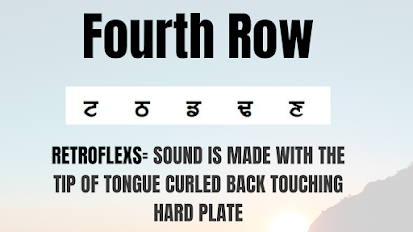The Gurmukhi Script Of The Punjabi Language
Gurmukhi Script of Punjabi
What is the Gurmukhi script and what is its origin?
Gurmukhi Script
is an Abugida script in which the consonant and vowels are written in the one
unit to form of a word and diacritics are used to alter the meaning of the word. The
Gurmukhi meaning is from the mouth of Gurus Because this script was used by
Sikh Gurus to transcribe the message of Sikhism.
The Origin of Gurmukhi Script
Gurmukhi Script
is derived from a Landa script of Sharada which itself is a derivative of
Brahmi script. The Gurmukhi script was around for many years but from around 1504 A.D to 1552 A.D it was standardized
by the second Guru of Sikhism known as Guru Angad Sahab. The Gurmukhi script is
officially used in the Indian Punjab region of India.
Structure of Gurmukhi Script
Gurmukhi Script
consists of 35 letters known as Panti Akkhar of Akkad in the Punjabi language which
are arranged in 7 rows of 5 columns of letters. Each Alphabet is placed
according to the sound made within the mouth.
The First, Second, and Third Row of Gurmukhi Script
The first row is known as vowels or the Laga Matra in the Gurmukhi Script because they are
attached with the other consonant to form a word. The second row is known as
velars because the sound of the alphabets is unglottalized and these consonants
are known as Kavarg Toli in the Gurmukhi
Script. Examples of velars or Kavarg Toli are Kenj (How), Kon (who), Kinne (How many). The third row is known as the palatals or Affricative because the
sound stops and releases as harsh it can be when leaving the mouth which is
known as frication and in Punjabi, they are known as a Chavarg Toli. Examples
are Chattar (cunning), Chuwa (Mouse), Chal (let's go).
The Fourth and Fifth Row of Gurmukhi Script
The fourth row is known as the retroflex because the
sound is made with the tip of the tongue curled back towards the hard plate. They are known
as Tavarg Toli is the Punjabi GurmukhiScript examples of Retroflex or Tavarg Toli are Tappay (Folk Songs),
Tamatar (Tomatoes), Toe(Touch). the fifth row is known as the dental consonants
because the sound is made by the contact of tongue with the upper teeth the are
known as Tawarg Toli is the Gurmukhi
Script of Punjabi Examples of Dentals or Tawarg Toli are Tair(Swim)
Tenu(you) Te(And).
The Sixth and Seven Row of Gurmukhi Script
The Sixth Row is known as Labials because the sound is made
using the lips only and in the Gurmukhi
Script of Punjabi they are known as Pavarg Toli, Examples are Pa(Small) Paa
(To Put) Pair(Foot). The seventh Row is known as the Sonorants because the
consonants have a resonant when they are pronounced, The Resonant meaning is
that the word has Continuing in them, they are known as Antim Toli in the Gurmukhi Script of the Punjabi
language.
Additional Six Letter, Germination, Tippi and Bindi
There are Additional six letters in the Gurmukhi Script of the Punjabi language they are recently added and
are not present in the guru Granth Shahab a book of Sikhism. These Additional
six letters represent the foreign sound taken from languages which are Persian
and Arabic and Urdu. The Germination is used to represent the Tone in the
Punjabi language and Tippi and Bindi are used to represent the short and long
vowels respectively.





Comments
Post a Comment